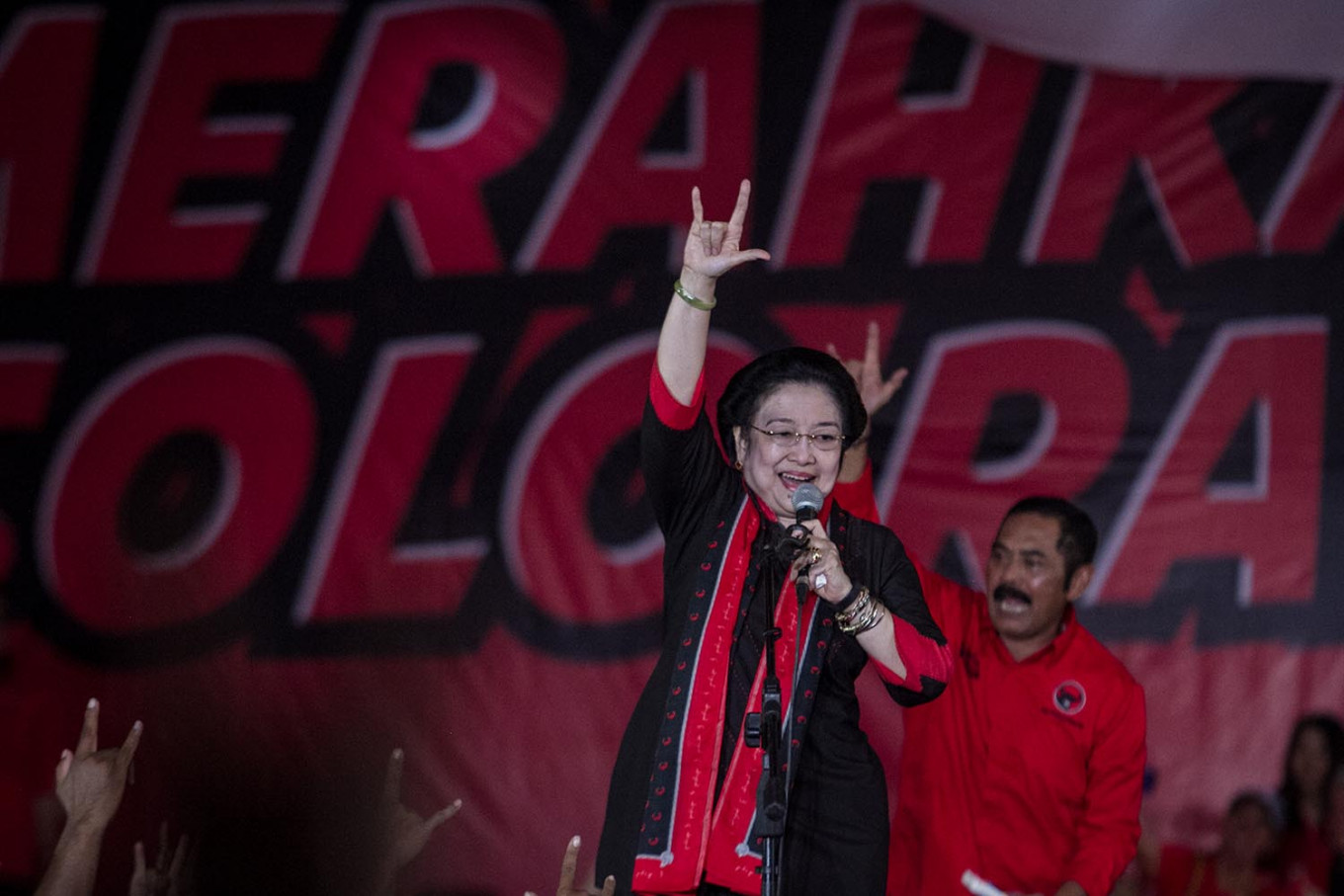Popular Reads
Top Results
Can't find what you're looking for?
View all search resultsPopular Reads
Top Results
Can't find what you're looking for?
View all search resultsPDI-P: Opposition force that rose to become ruling party
By endorsing Jokowi’s reelection bid in 2019, some have predicted that the PDI-P will secure the most votes in the next legislative election as the party is expected to benefit the most from the coattail effect of the incumbent.
Change text size
Gift Premium Articles
to Anyone
T
he ruling Indonesian Democratic Party of Struggle (PDI-P) was established on Jan. 10, 1973 under the name the Indonesian Democratic Party (PDI).
The origins of the PDI-P can be traced back to 1927, when Indonesia’s founding father and first president Sukarno founded the Indonesian National Party (PNI).
Following Sukarno’s downfall in the late 1960s, the PNI established a fusion of four major parties — the Indonesian Christian Party (Parkindo), the Catholic Party, the Independence Vanguard Party (IPKI) and the Murba Party — and, thus, the Indonesian Democratic Party (PDI) was born.
Most PDI members at that time came from the PNI and had large supporter bases in Central Java and East Java. Until today, the two large provinces remain major strongholds of the PDI-P.
The idea of changing the party’s name to the PDI-P first arose in 1993, when Sukarno’s daughter Megawati Soekarnoputri, Indonesia’s fifth president, was elected as PDI chairwoman by a congress in Surabaya, East Java. However, reports say that the then authoritarian president Soeharto did not want her to lead the party and replaced her with Soerjadi.
The internal feud escalated, leading to a bloody attack on the PDI headquarters in Central Jakarta, which resulted in the deaths of dozens of members. After the attack, Megawati declared that her supporters would not take part in the 1997 general election, thus severely weakening the PDI’s performance in the election. The Soerjadi-led PDI only secured 11 seats in the House of Representatives.
The downfall of Soeharto’s 32-year regime in 1998, along with economic and political crises, gave pro-Megawati PDI members an opportunity to establish the PDI-P and name her the party chairwoman so the party could contest the 1999 election. Until now, Megawati still leads the PDI-P and has become the party’s icon and patron.


















